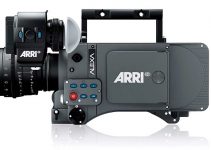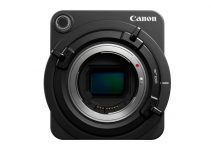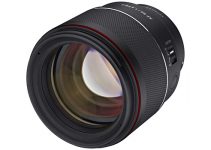The introduction of the Canon C70 was a shock and delight for loyal Canon shooters who have been begging the company to be more adventurous and take the lead over the crushing competition from Sony and Blackmagic.
The shock came raining down hard when we got a look at it’s strange, bulky-DSLR body shape, but we were delighted to learn that it was not only the first cinema camera to use Canon’s RF mount but that is also used the same sensor as their flagship documentary-workhorse, the Canon C300 Mark III.
This camera checks a heck of a lot of boxes, and is beyond a worthy upgrade for anyone filming on a C100 or C200 (in compressed MP4). Does having the same Dual Gain Output sensor as the C300 III mean that it’s just as good as it’s $10,999 big brother at half the price?
Monkeypixels got their hands on a pre-production model and snuck a little footage our way so you can see for yourself. Same company, same sensor, same look? Let’s find out.
In the camera game, Canon is undeniably at the top. With their beautiful sensors, fantastic lenses, and top-notch build quality it is hard for any other company to take them on in every metric all at the same time.
They are the Honda (or Toyota) of cameras – not flashy, not super fast, but they’ll get ya there for sure.
We all knew an RF mount Cinema camera was coming, but the fact that they used the exact same sensor from the C300 III, which was only announced 5 months earlier, really blew us all away. That piece of information alone was enough to make us look past the design of the C70, which leaves a lot to be desired for ergonomics.
Let’s take a look at how these cameras match up.
Canon C300 Mark III Key Features
- Super 35mm Dual Gain Output (DGO) Sensor
- 4K 120p, 2K Crop 180p HDR
- Cinema RAW Light and XF-AVC H.264 Codec
- EF Lens Mount, DIG!C DV7 Image Processor
- Price: $10,999
Canon C70 Key Features
- Super35 Dual Gain Output (DGO) Sensor
- 4K 120p, 2K Crop 180p HDR Capture
- Canon Log 2, 3, PQ & HLG Recording
- RF Lens Mount / EF Mount with Adapter
- Price: $5,499
The biggest difference between the C70 and C300III is the media; the C70 uses SD cards, and the C300III uses CFexpress. This is the biggest indication of what area of filmmaking these systems were designed to facilitate.
With faster media, the C300III can film in broadcast-ready codecs and raw – allowing it to be used in professional documentaries and narrative films. The C70 is geared toward videography applications and content creation for the web.
Side-by-side, over YouTube, it’s hard to see much of any difference between these two cameras. Their images are clean. The skin tones look accurate. And, the highlight rolloff is nearly identical.
At times, I would almost say the C70 produces a better image but I think that has more to do with the grade to the C300III in this example.
The C300III has a little more noise in the shadows, but that (again) has to do with the C70 having in-camera noise reduction applied. Since the C300III is filming in raw, no noise reduction is applied in-camera.
Underexposure Test
Underexposing the image by 4 stops and correcting in post, the C70 actually destroys the C300III thanks again to the in-camera noise reduction. Noise can easily be seen in the shadows of the image from the C300III that would have to be corrected in post.
After post processing, however, I doubt there would be any noticeable advantage when shooting with the C70.
Skin tones
In this example, you can clearly see how well the C70 renders highlight rolloff on skin tones. By contrast, the C300III looks a bit more washed out in this example.
Though I am certain this has more to do with the grade than the camera, it is fantastic to see that the C70 makes post color a bit easier.
Low Light
This is the one area where you can clearly see a dramatic difference between the two cameras. The raw codec in the C300III is capturing much more color information than the C70, and although both cameras are doing really well at 25,600 ISO you can see the colors of the C70 starting to fall apart.
Both images are grainy, but you have a lot more to work with from the C300III to smooth out this low light shot. The C70’s image certainly couldn’t handle much grading with its compressed codec.
Same Camera, Two Bodies
From this test, I’m pretty shocked. It’s rather clear that the C300III is almost-completely matched by the C70. Online, there is little to no chance anyone would ever be able to tell the difference between footage shot with the C70 vs C300III.
Both cameras use essentially the same autofocus system, sensor, color science. Depending on what it is that you are shooting, you won’t see an advantage of using one versus the other at the end of the day.
The C70 is smaller, lighter, able to use RF and EF lenses, and can be adapted with a focal reducer to achieve a near full-frame look. Personally, I’m a huge fan of Canon cameras so I think either one of these will serve you well and if you’re a C300III shooter the C70 would make an excellent B camera.
If you’re just starting out and won’t require the additional codecs or raw from the C300III, you’ll still capture amazing images with the C70 and you’ll have that extra $5,500 in your pocket to boot!
[source: Monkeypixels]
B&H Order Links:
Canon EOS C70 Cinema Camera (RF Lens Mount)
Canon EOS C300 Mark III Digital Cinema Camera Body
Disclaimer: As an Amazon Associate partner and participant in B&H and Adorama Affiliate programmes, we earn a small comission from each purchase made through the affiliate links listed above at no additional cost to you.




